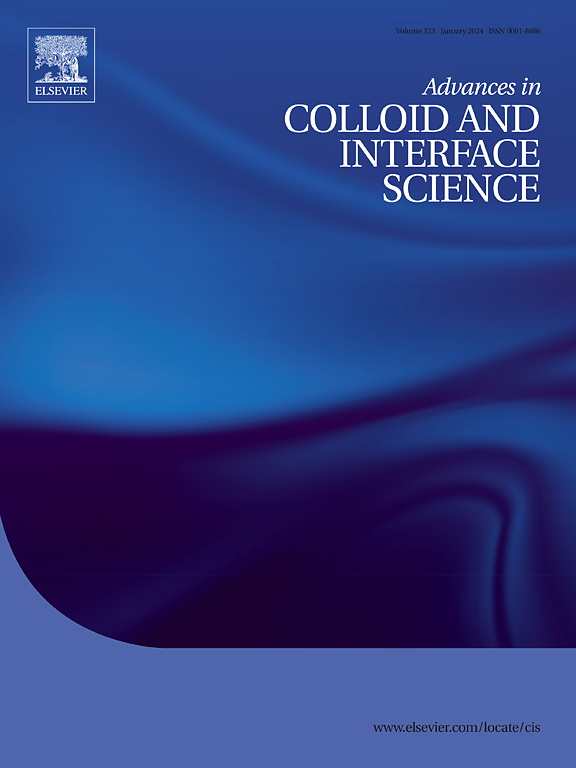Fibrous protein gels: Nanoscale features governing gelation behavior and gel properties
IF 15.9
1区 化学
Q1 CHEMISTRY, PHYSICAL
引用次数: 0
Abstract
Protein fibrils, as nanoscale structures with high aspect ratios, exhibits superior physical properties—such as gelation, emulsification, stability, and foaming—compared with traditional protein gels. This review explores the properties, mechanisms, and recent advancements related to protein fibrils in gels. It begins by outlining the fibril formation process and detailing factors influencing this process, such as pH, temperature, heating time, ionic strength, protein concentration, chaotropic agent, shear forces, pressure, and ultrasound. Then, the conditions for gel formation and the properties of single-component fibrous gels are examined, with a focus on the decisive impact of fibril morphology, particularly length, on gel mechanical properties. Further, the review discusses polysaccharide-enhanced protein fibril hydrogels, polyphenol-enhanced protein fibril hydrogels, and protein fibrils as gel reinforcers, highlighting significant improvements in mechanical strength and stability. It also covers recent applications of fibrous gels in delivery systems, edible coatings, wound dressings, and tissue engineering scaffolds. Finally, the promising prospects of protein fibrils are summarized. These structures impart gels with enhanced mechanical properties, stability, enzyme resistance, self-healing ability, antioxidant activity, and antibacterial effects, offering tremendous potential for applications across various fields.

纤维蛋白凝胶:纳米级特征控制凝胶行为和凝胶性质
蛋白原纤维作为具有高纵横比的纳米级结构,与传统的蛋白凝胶相比,具有优越的物理性能,如凝胶性、乳化性、稳定性和泡沫性。本文综述了凝胶中蛋白原纤维的性质、作用机制及其最新进展。它首先概述了纤维的形成过程,并详细说明了影响这一过程的因素,如pH值、温度、加热时间、离子强度、蛋白质浓度、向乱剂、剪切力、压力和超声波。然后,研究了凝胶形成的条件和单组分纤维凝胶的性能,重点研究了纤维形态(特别是长度)对凝胶力学性能的决定性影响。此外,本文还讨论了多糖增强蛋白原纤维水凝胶,多酚增强蛋白原纤维水凝胶和蛋白原纤维作为凝胶增强剂,强调了机械强度和稳定性的显着改善。它还涵盖了纤维凝胶在输送系统,可食用涂层,伤口敷料和组织工程支架中的最新应用。最后,对蛋白原纤维的应用前景进行了总结。这些结构赋予凝胶增强的机械性能、稳定性、酶抗性、自愈能力、抗氧化活性和抗菌作用,在各个领域提供了巨大的应用潜力。
本文章由计算机程序翻译,如有差异,请以英文原文为准。
求助全文
约1分钟内获得全文
求助全文
来源期刊
CiteScore
28.50
自引率
2.60%
发文量
175
审稿时长
31 days
期刊介绍:
"Advances in Colloid and Interface Science" is an international journal that focuses on experimental and theoretical developments in interfacial and colloidal phenomena. The journal covers a wide range of disciplines including biology, chemistry, physics, and technology.
The journal accepts review articles on any topic within the scope of colloid and interface science. These articles should provide an in-depth analysis of the subject matter, offering a critical review of the current state of the field. The author's informed opinion on the topic should also be included. The manuscript should compare and contrast ideas found in the reviewed literature and address the limitations of these ideas.
Typically, the articles published in this journal are written by recognized experts in the field.

 求助内容:
求助内容: 应助结果提醒方式:
应助结果提醒方式:


